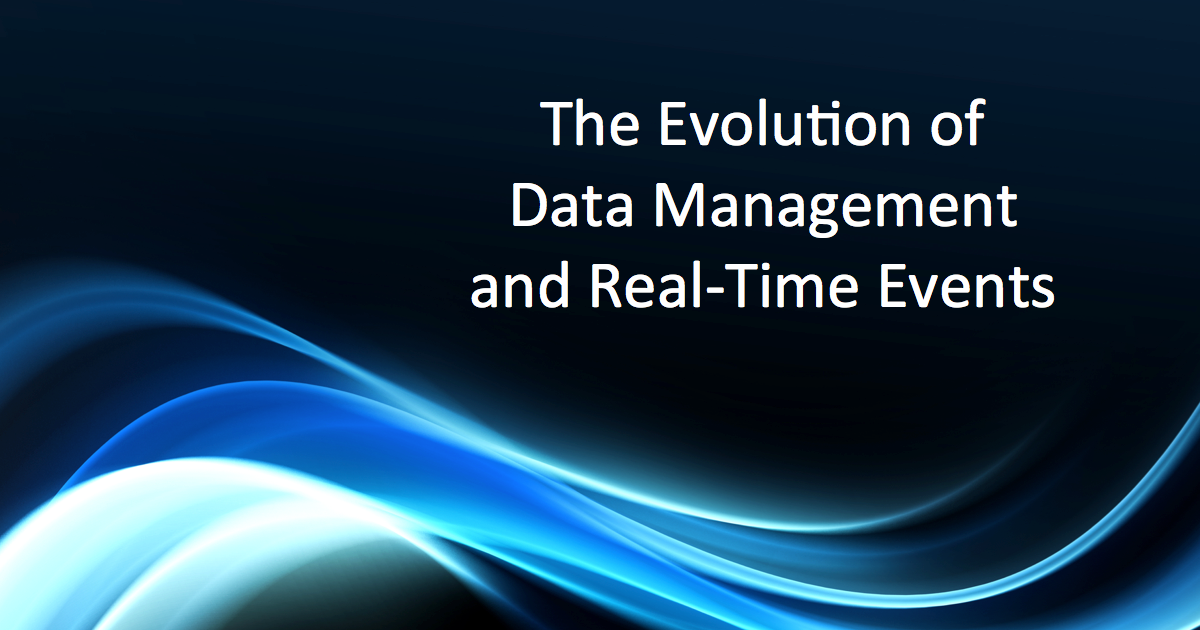In this post, we’ll be taking a quick look at the evolution of data management, and why working with real-time events and transactions is the most natural way to interact with your enterprise data.
Events and transactions are, by their nature, real-time. Purchases happen over the course of the day. The technology for recording, collecting, and processing these business transactions, supply chain events, and other operational occurrences has historically placed
artificial timeframes around how the timing of business is both viewed and perceived. Traditional platforms for transferring, storing, and analyzing these events had limitations, which included:
- Connectivity and Bandwidth – These limited the ability of organizations to move evidence of events. Instead of being able to understand sales as transactions occurred, connectivity limited the movement of transactions from store-located point-of-sale systems to back office environments to particular times of day, often after the close of the business day when connectivity and bandwidth were less limited.
- Data Acquisition Processing – Limitations in ETL processing platforms often bunched transactions together before loading them into operational applications or analytical platforms. Again, this often limited visibility into the timing of actual events and transactions until the end of the day or the beginning of the next.
- Database Capacity – Restrictions on the amount and various types of data that traditional database platforms could handle also restricted the view of a business. Event-level details were often aggregated up to a stage where details were lost, and the true nature of business data was incomplete.
While the events of a business have always been intrinsically real-time, the legacy technologies supporting them limited the view and gave executives, managers, and analysts a distorted view of how a business operates.
However, modern data architectures including real-time data collection, movement, and processing have lifted the veil of “batch” from the view of organizations. Companies can now see the true speed of business and manage it based on the business potential of the real-time events surrounding customers, suppliers, and partners.
To learn more about the benefits of real-time events and how to work with your data the moment it’s born, please watch our webinar, “How Industry Leaders Use Streaming Integration to Modernize Their Data Architecture,” or schedule a demo with a Striim expert for further information.
























